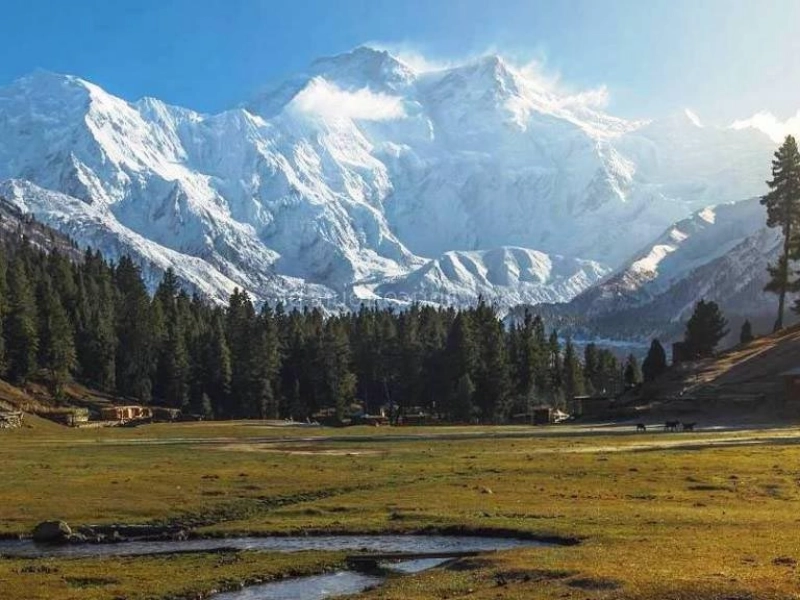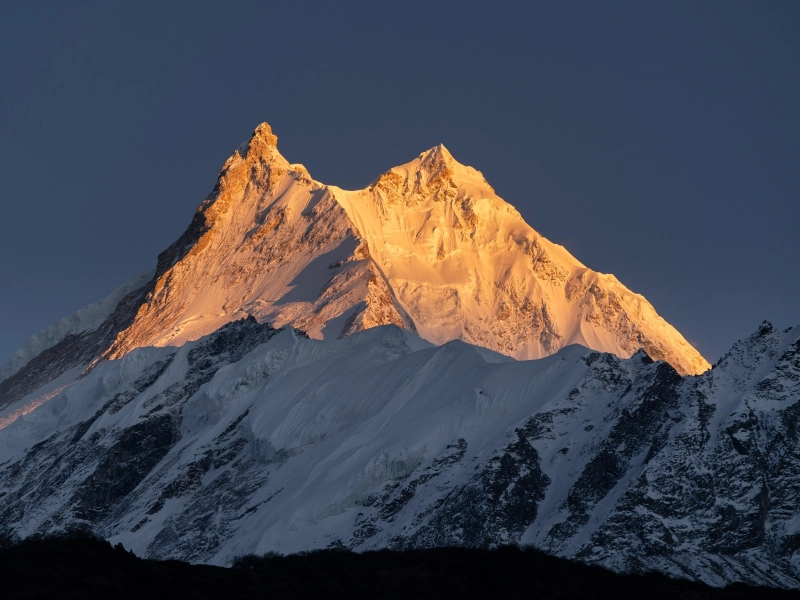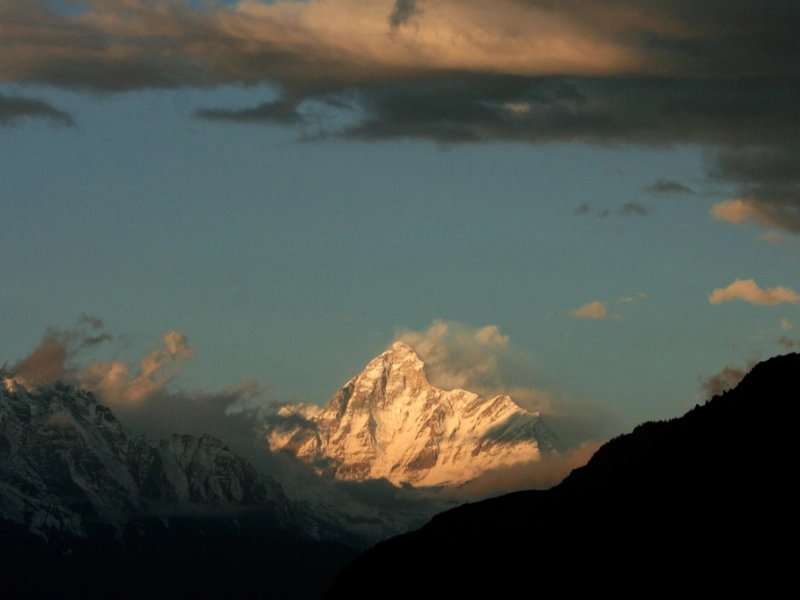The Manaslu, also referred to as "Killer Mountain," has taken many trekkers' lives. Climbing this mountain is among the riskiest and most difficult in the world. Its precipitous incline has drawn many lethal animals, including snow leopards and Himalayan tahr. Nanga Parbat, the ninth-highest peak in the world, is known as "Naked Mountain" in Urdu. It is also one of the riskiest peaks to climb, with a death rate of 22.3%.

 People refer to Manaslu as "Killer Mountain" primarily because of the numerous fatal avalanches that have occurred on this treacherous peak. The mountain is one of the hardest in Nepal to climb and calls for a great degree of expertise. It's also a well-liked trekking destination.
Climbers have attempted numerous routes to reach the summit of this peak, with Japanese climbers Toshio Imanishi and Sherpa Gyalzen Norbu making the first successful ascent in 1956. Since then, numerous expeditions have ascended the mountain.
Wolfgang Nairz's Austrian team completed the second ascent up the SW face in 1972. While Andy Schrick and Franz Jaeger vanished on the summit plateau in the midst of a violent storm, Reinhold Messner managed to reach the summit. Three climbers—Gerhard Schmatz, Sigi Hupfauer, and a Sherpa—reached the summit in 1973 as part of a West German expedition. When Naoko Nakaseko, Masako Uchida, and Mieko Mori ascended the Northeast route in 1974, under the leadership of Kyoko Sato, a Japanese team achieved the first women's ascent of an 8,000-metre peak.
People refer to Manaslu as "Killer Mountain" primarily because of the numerous fatal avalanches that have occurred on this treacherous peak. The mountain is one of the hardest in Nepal to climb and calls for a great degree of expertise. It's also a well-liked trekking destination.
Climbers have attempted numerous routes to reach the summit of this peak, with Japanese climbers Toshio Imanishi and Sherpa Gyalzen Norbu making the first successful ascent in 1956. Since then, numerous expeditions have ascended the mountain.
Wolfgang Nairz's Austrian team completed the second ascent up the SW face in 1972. While Andy Schrick and Franz Jaeger vanished on the summit plateau in the midst of a violent storm, Reinhold Messner managed to reach the summit. Three climbers—Gerhard Schmatz, Sigi Hupfauer, and a Sherpa—reached the summit in 1973 as part of a West German expedition. When Naoko Nakaseko, Masako Uchida, and Mieko Mori ascended the Northeast route in 1974, under the leadership of Kyoko Sato, a Japanese team achieved the first women's ascent of an 8,000-metre peak.
 With a variety of high-altitude habitats, Nanda Devi National Park and its neighbouring sanctuaries sustain significant wildlife populations. These include carnivores like snow leopards and Himalayan musk deer, as well as wild ungulates and galliformes. The reserve also boasts a remarkable alpine flora, representative of the Western Himalaya biogeographic zone.
Climbers cannot reach Nanda Devi's main summit due to its religious significance. However, one can hike along the Sanctuary Wall, the mountain rim that encircles the main summit. Experts rate the walk from moderately challenging to demanding.
The peaks of Nanda Devi West, Nanda Devi East, and Kamet are all part of the massif. These peaks are connected to Nanda Devi National Park by high passages. The predominant plant species in the vast Nanda Devi Sanctuary's flora are fir, birch, and rhododendron. There are also 17 uncommon and endemic flower species. The alpine, prone, and moss-based lichens provide support for the plants.
With a variety of high-altitude habitats, Nanda Devi National Park and its neighbouring sanctuaries sustain significant wildlife populations. These include carnivores like snow leopards and Himalayan musk deer, as well as wild ungulates and galliformes. The reserve also boasts a remarkable alpine flora, representative of the Western Himalaya biogeographic zone.
Climbers cannot reach Nanda Devi's main summit due to its religious significance. However, one can hike along the Sanctuary Wall, the mountain rim that encircles the main summit. Experts rate the walk from moderately challenging to demanding.
The peaks of Nanda Devi West, Nanda Devi East, and Kamet are all part of the massif. These peaks are connected to Nanda Devi National Park by high passages. The predominant plant species in the vast Nanda Devi Sanctuary's flora are fir, birch, and rhododendron. There are also 17 uncommon and endemic flower species. The alpine, prone, and moss-based lichens provide support for the plants.
 Pronounce it "kah-LEE." K2 is one of the deadliest mountains on earth, with one of the worst recorded death rates among the world's 14 8,000-metre summits. The summit is well-known for its challenging climbing, which includes the infamous Bottleneck Couloir, a steep portion of the mountain that has multiple hazards, including House's Chimney, a 100-foot fissure. There are also more hazardous areas on the summit, including the Rupal Face.
Climbers must contend with hurricane-force winds and below-freezing temperatures in the winter. On K2, errors can be fatal even in cases where a team prepares ahead of time and performs well. Until 2021, nobody had been able to reach the top of the peak during the winter.
Pronounce it "kah-LEE." K2 is one of the deadliest mountains on earth, with one of the worst recorded death rates among the world's 14 8,000-metre summits. The summit is well-known for its challenging climbing, which includes the infamous Bottleneck Couloir, a steep portion of the mountain that has multiple hazards, including House's Chimney, a 100-foot fissure. There are also more hazardous areas on the summit, including the Rupal Face.
Climbers must contend with hurricane-force winds and below-freezing temperatures in the winter. On K2, errors can be fatal even in cases where a team prepares ahead of time and performs well. Until 2021, nobody had been able to reach the top of the peak during the winter.